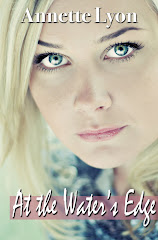Instead of considering bedtime reading a new year's resolution (something you know will flounder around, oh, February, if you're doing really well), simply pick up books at night as a treat for both parent and child.
What to pick? In the near future, I'll post a great list of middle grade and young adult titles perfect for reading together as a family.
For now, here's one fantastic idea, one that even my teenager (a boy!) enjoyed and laughed over. You've surely heard of this classic, which celebrated its 100th birthday a few months ago:
Four months after the novel's 1908 release, Mark Twain wrote to the author and declared that the heroine was “the dearest and most lovable child in fiction since the immortal Alice.”
Readers agreed, in droves, and today, they still do.
The book went on to be translated into dozens of languages. It spawned seven sequels. Several stage plays and motion pictures and at least one musical have been made of it. A national park in Canada is centered around its heroine. Tourists who love the story enjoy annual events and 3-day tours around beloved Prince Edward Island.
2008 marked the one-hundred-year anniversary of the debut of Anne of Green Gables by L. M. Montgomery. Twain was right; a century after he made his statement about Anne, there’s a good chance that worldwide, more readers have read about her—and loved her—than Lewis Carroll’s Alice.

Lucy Maud Montgomery was born on Prince Edward Island in 1874, and she spent most of her growing-up years there, raised by strict grandparents. After attending Prince of Wales College and Dalhousie University, she taught in local schools and worked at two newspapers. During that time, she worked hard on her craft, writing and selling poems and several dozen short stories.
She returned home to PEI in 1902 to care for her ailing grandmother, still writing and publishing her short stories, and decided to try her hand at a full-length novel for the first time. First she looked over a notebook where she kept story ideas, and she came across an entry about an elderly couple wanting to adopt a boy but who were mistakenly sent a girl.
Thus Anne of Green Gables was born. The book flew off shelves when it was released June of 1908. Montgomery continued writing books for decades, following her first success with Anne of Avonlea, Kilmeny of the Orchard (a rework of a previously published short story as a novella), and The Story Girl.
Shortly after her grandmother’s death in 1911, she married a minister, Ewan Macdonald, and moved with him to Canada's mainland, where she lived for the rest of her life, returning to PEI only for visits.
If you’re looking for an excuse to gather around and enjoy literature this winter, use Anne’s recent centennial as a way to bring your family together. There’s something in the book—and in all of L. M. Montgomery’s work—for everyone.
Young girls love Anne’s imagination and feel for her when she gets into scrape after scrape.
Older children—including boys (remember mine?)—laugh at the wry humor from Marilla and Mrs. Lynde.
And adults appreciate the deeper themes and wit.
Already read Anne of Green Gables? Try some of Montgomery's other work. Read one of the following Montgomery books aloud as a family or enjoy alone with a cup of hot chocolate on a cool winter day next to a roaring fire:
The Blue Castle is one of only a few her books that focus on an adult protagonist rather than a child, and the only one that does not feature Prince Edward Island. Valancy is an old maid living with her oppressive mother and aunt. She wishes desperately to live her own life but lacks the courage until she sees a heart specialist who tells her she has only a year to live. She keeps her diagnosis a secret and determines that her last year will be meaningful. For the first time in her life, she stands up for herself—leading her strait-laced family to believe she’s lost her mind. Poignant, moving, and laugh-out-loud funny, The Blue Castle is one of Montgomery’s best.
Rilla of Ingleside, although part of the Anne series, is actually about Anne’s daughter. Rilla (named after Marilla from Green Gables) is the youngest in her family. The Great War (World War I) breaks out in Europe, and the reader experiences the challenges and worries families on the home front endured when the world’s future was unsure and frightening. Rilla grows up fast as she sends her beau to war, becomes an adoptive mother, and watches her dearest brother, Walter, enlist as well. Some of the description and angst over the war come from Montgomery’s own journals. Rilla is arguably the best of the Anne series.
Emily of New Moon and its two sequels, Emily Climbs and Emily’s Quest, while less-known, are just as delightful as the Anne books. The story is fictional, but certain elements make these books the most autobiographical of any of Montgomery’s work. Emily’s mother dies when she is only a toddler, just as Montgomery’s did, and Emily’s one memory of her mother comes almost verbatim from Montgomery’s journal remembering her mother’s funeral when she herself was just twenty-one months old. Other autobiographical elements include Emily’s creative “flash” and her ambitions of becoming a writer.
If you enjoy these books, you might want to look into Montgomery’s other works, such as Jane of Lantern Hill, the 2-book Pat series, A Tangled Web, and Magic for Marigold, not to mention some ten volumes of collected short stories, which are also great for bedtime reading.
Lucy Maud Montgomery exploded on the world’s literary scene with Anne in 1908, leaving a legacy to last for generations to come. The one hundredth anniversary is an event definitely worth celebrating.
So gather the family around the fireplace, pull up a chair, and begin with Chapter One: “Rachel Lynde Is Surprised.”
Enjoy!
Return to the Neighborhood.








